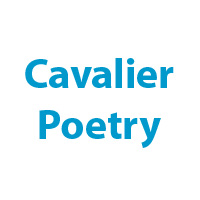What is Cavalier Poetry?
The term Cavalier or Caroline (adjective from Charles) is used for a group of mid 17th century poets who sided with King Charles I against the parliament. These Cavalier or Caroline poets were the followers of Ben Johnson, and may properly be called the 'Sons of Ben', though some of them also display the influence of John Donne.

The cavalier poets sympathized the king. Some of them went into exile with the king and the other stayed home in England. Some of them wrote elegant verse, more light than serious, so that the term ‘cavalier poetry’ came to refer to a kind of light lyric, often advocating a Carpe diem (seize the day) attitude. To “seize the day” means to disregard the future so that one might expect the poets of this theme to ignore religion. But life is not so simple. Some cavalier poets were also men of strong religious faith, who neither wrote religious epics nor holy sonnets. The most important poets of this school are Herrik, Carew, Lovelace, Suckling and Walter Denham. The 17th century poet, Andrew Marvell managed a blend of metaphysical and cavalier attitudes and techniques so neat and elegant that he has been classified under both headings.
The Caroline lyric is the result of conscious effort. It is artificial. It is a work of art characterized by finish, polish and elegance of language, but lacking the spontaneity and absence of effort which characterized the Elizabethan lyric. It has a formal finish and perfection, but is wanting in natural care and warmth of emotion.
It mirrors the mood and temper of the age. It is often coarse, licentious and indecent, thus reflecting the coarseness and indecency of the courtly circles to which most of the poets of this school belonged. The poets of this school again and again find the various beauties of nature united in their beauty of their respective beloved.
The cavalier pets are great lovers of nature. They observe nature minutely and describe it with feelings. Concrete, visual images drawn from the homelier and simpler objects and forces of nature abound in their lyrics. The lyric is charming, but there is something trivial and unsubstantial about it. In this respect again, it reflects the triviality and frivolity of the life of the times.
Published on 30 June 2014 by Kedar Nath Sharma
